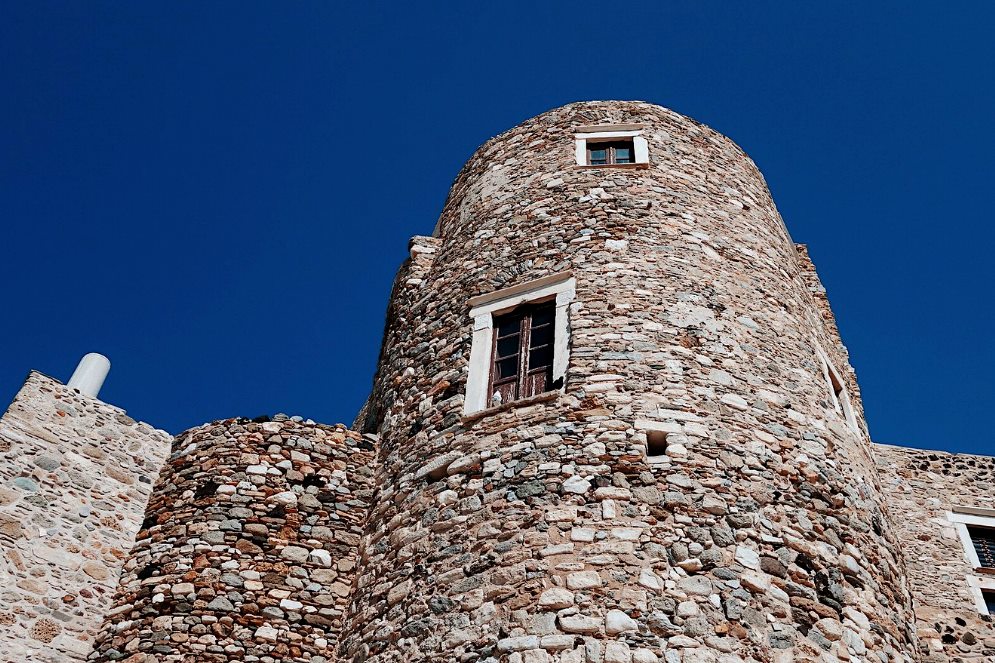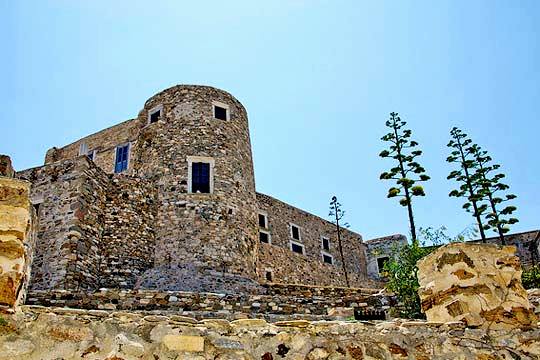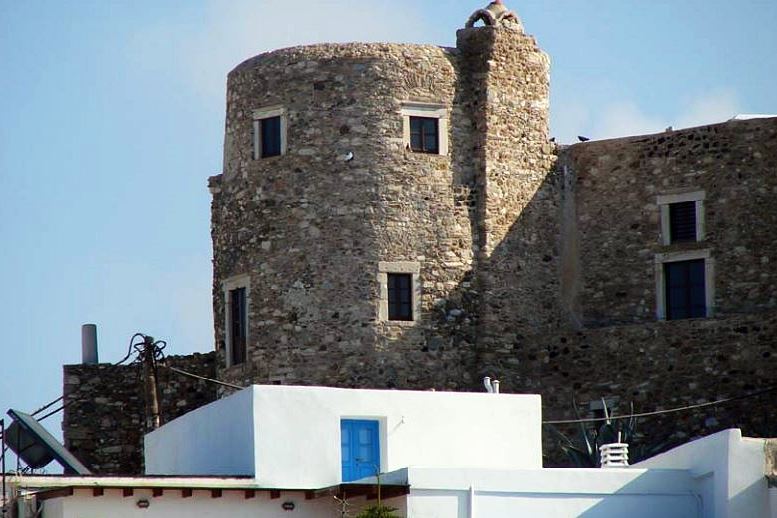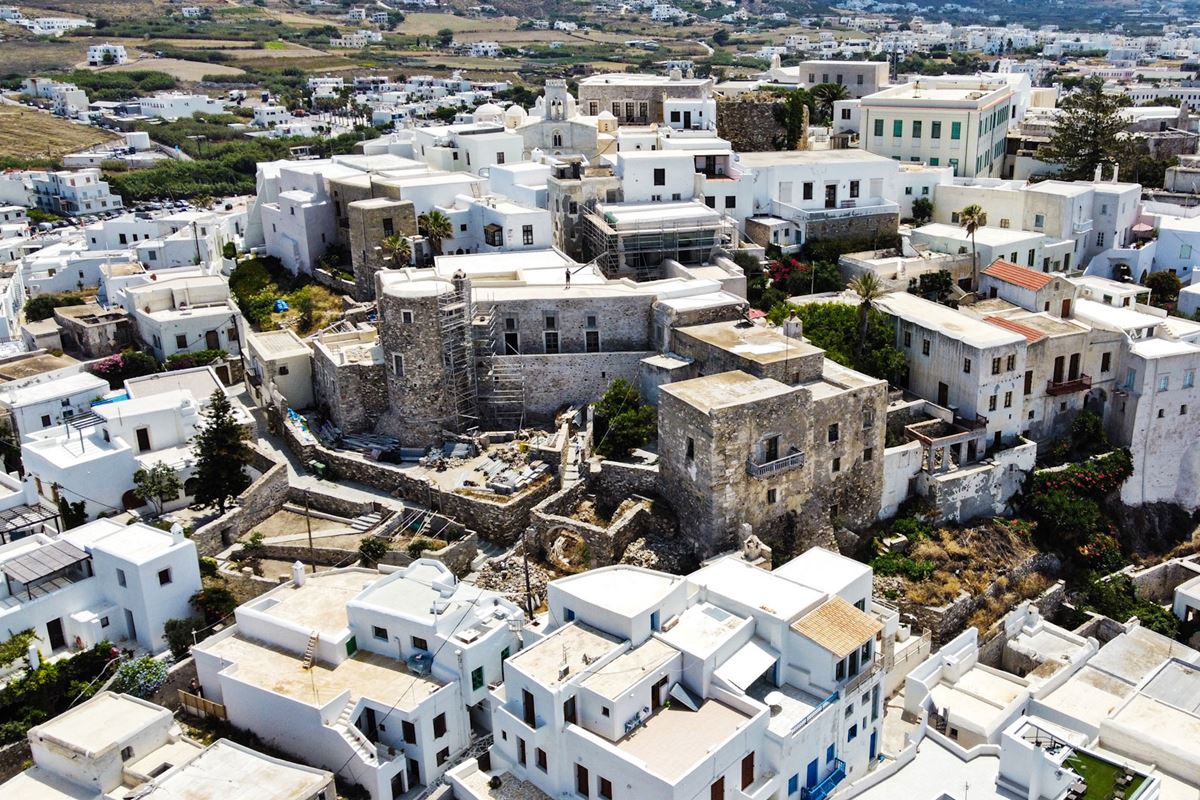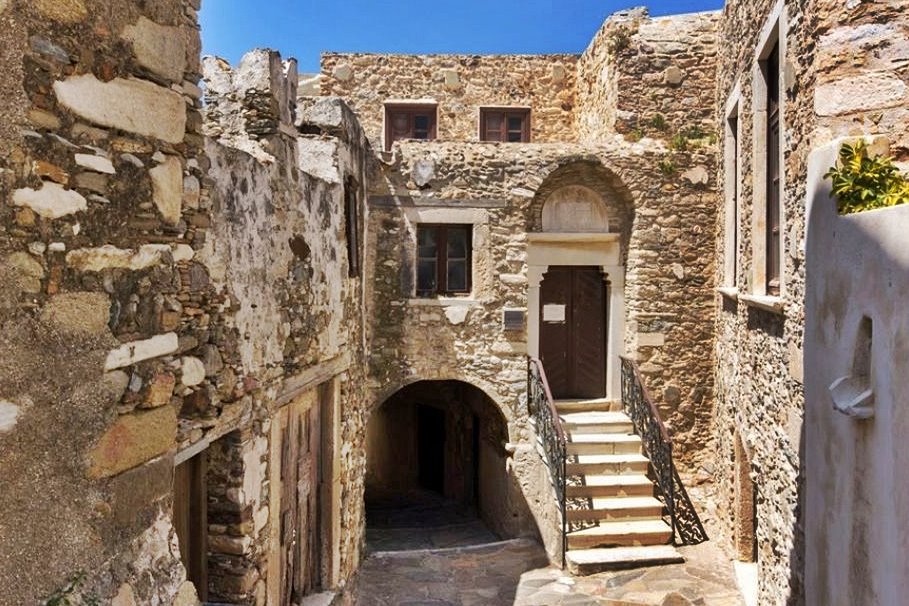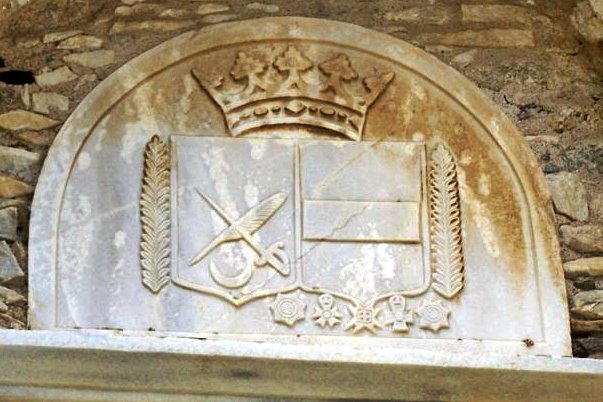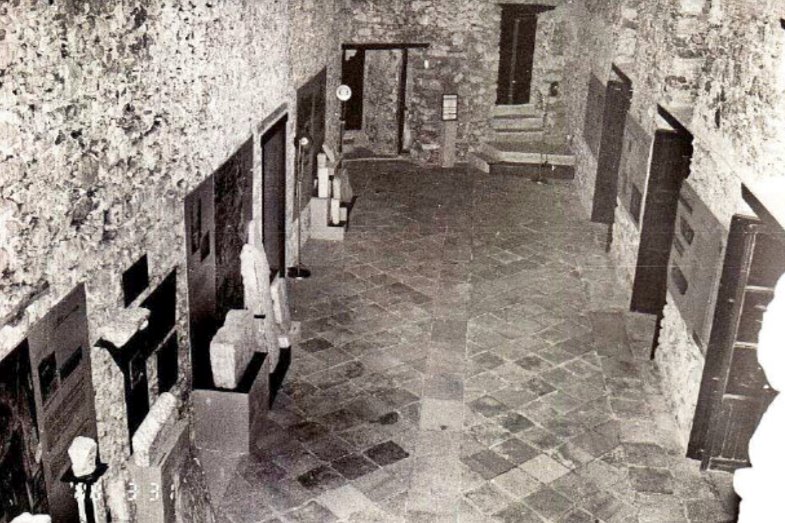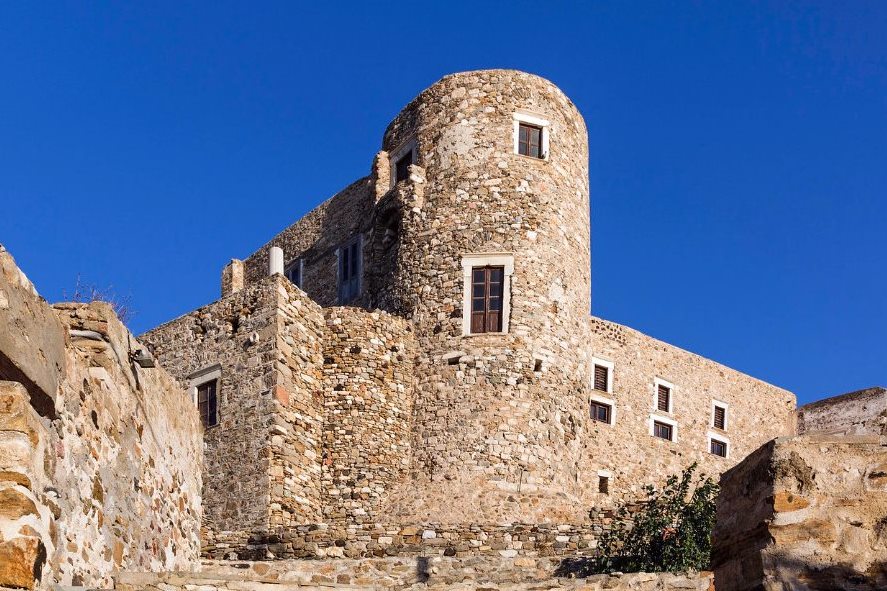Chora, Naxos, Cyclades,South Aegean
Glezos Tower
| Location: |
| Chora, Naxos, at the NW corner of the castle-city of Naxos |
| Region > Prefecture: | 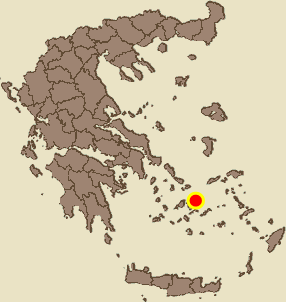 |
| South Aegean Cyclades | |
| Municipality > Town: | |
| City of Naxos • Chora | |
| Altitude: | |
| Elevation ≈ 30 m |
| Time of Construction | Origin | |
| end of 15th cent. | VENETIAN |
|
| Castle Type | Condition | |
| Tower House |
Very Good
|
Glezos Tower or Crispi Tower is basically part of the castle of Naxos and the only tower preserved intact from the 12 that once protected the castle.
History
The fortification that surrounds the castle of Naxos has a pentagonal shape and had three gates. Near the northwestern gate (the “Trani Porta”) is the tower-house of Glezos (or Crispi) which extends on the western and northern sides of the Castle.
The Castle of Chora exists since 1207, when the Latin rule was established in the Aegean. The Venetian Marco Sanudo occupied Naxos that year and became “Duke of the Archipelago”, and he is the one who founded the castle of Naxos with 12 perimeter towers, one of which is (after major modifications) the tower of Glezos (some of the other remaining towers have been incorporated into newer constructions).
It is also called “Tower of Aperathitissa”.
The type of the tower shows that it is much later than the rest of the castle. The elements that differentiate it are the cylindrical shape and the formation of scrapa (sloping mantle wall) and cordone (stone ring) at its base. It is believed that the tower was built towards the end of the 15th century and more specifically during the short period 1494-1500 when the Duchy was under direct rule of Venice. At that time the Venetians had made major repairs and reinforcements to the castle and perhaps then this tower was also built.
Originally, the tower belonged to the Crispi family. The Crispis were the second dynasty of dukes that ruled the Duchy of Naxos from 1383 to 1566. During the Turkokratia, the tower became the property of the official of Wallachia Frangopoulos or Aga. Then, it passed into the hands of the Dragouman of the Ottoman court Barocci, until it became the property of P. Glezos.
Years ago, in early 20th century, the tower looked abandoned, but the Glezos family donated it in 1968 to the Archaeological Service.
During the years 1968-1969, restoration work was carried out on the tower. In 1968 the tower was renovated internally and externally and its masonry was strengthened. In 1995, additional restoration work was done on the tower so that it could be used as a museum. The tower today houses the Byzantine Museum of Naxos
Structure, Fortification & Buildings
The tower is a massive construction of the 15th century that has been integrated into a large, newer house in the outer ring of the Castle (it is one of those houses that were once part of the outer wall of the castle).
The outer diameter of the tower is 6.80m while the thickness of its walls reaches 1.60m. Its base is externally formed by a scarpa, which starts with a decorative stone belt (cordone).
The tower-house complex has two main levels, with a ground floor and auxiliary spaces. The main entrance (photo 6) is accessible via a staircase located on the elevated part of the internal road immediately after the passageway of the Trani Porta (ie the main gate of the castle of Naxos). The secondary areas of the tower have independent entrances which are also located inside the castle.
In the basement of the tower there is a large cistern (water tank) whose roof is vaulted.
Above the main entrance of the tower, there is the coat of arms of Giuseppe Barozzi (crown, sword, feather and insignia, photo 7). Also, on the lintel of the inner door of the tower is the coat of arms of the Crispi (three rhombuses, decorated with vine leaves). This door leads to the great hall on the first floor of the tower. This room is the largest of the medieval castle, with dimensions of 17✖4.80m and with a height of 4.90m (photo 8).
| First entry in Kastrologos: | September 2012 | Last update of info and text: | April 2024 | Last addition of photo/video: | April 2024 |
Sources
- ΑΡΧΑΙΟΛΟΓΙΚΟΝ ΔΕΛΤΙΟΝ, τεύχος 24/B2 (1969), σελ.406-407
- Website Cycladic Castles of the Ephorate of Antiquities of Cyclades, ΚΑΣΤΡΟ ΧΩΡΑΣ ΝΑΞΟΥ
- Αθανάσιος Δ. Κωτσάκης, «Η διαμόρφωση του πολιτισμικού τοπίου της νήσου Νάξου από το 1204 έως και την ίδρυση του Ελληνικού Κράτους», διδακτορική διατριβή, Πανεπιστήμιο Πελοποννήσου, Καλαμάτα, 2013, σελ.210-227
- Ορέστης .Π. Βαβατσιούλας, «Το κάστρο της Νάξου: οικοδομική ιστορία (13ος-20ος αι.): η ίδρυση ενός κάστρου σταυροφόρων, ο μετασχηματισμός του σε μεσαιωνική πόλη και η εξέλιξή του έως τη νεότερη εποχή», Διδακτορική διατριβή, ΕΜΠ, Σχολή Αρχιτεκτόνων, Αθήνα 2007
- Website ΟΔΥΣΣΕΥΣ - Υπουργείου Πολιτισμού - Κάστρο Χώρας Νάξου και Πύργος Γλέζου (Κρίσπι)
- Πέτρος Κοσμάς, «Πύργος Γλέζου, Κάστρο Χώρας Νάξου: Μουσειολογικός Προγραμματισμός και Σχεδιασμός», Μεταπτυχιακή Διατριβή, Ανοικτό Πανεπιστήμιο Κύπρου, 2016
- Tower-houses and mansions of Naxos
|
|
| Access |
|---|
| Approach to the monument: |
| Inside the old town of Naxos, at the top. |
| Entrance: |
| It is a museum now. Limited hours. |



